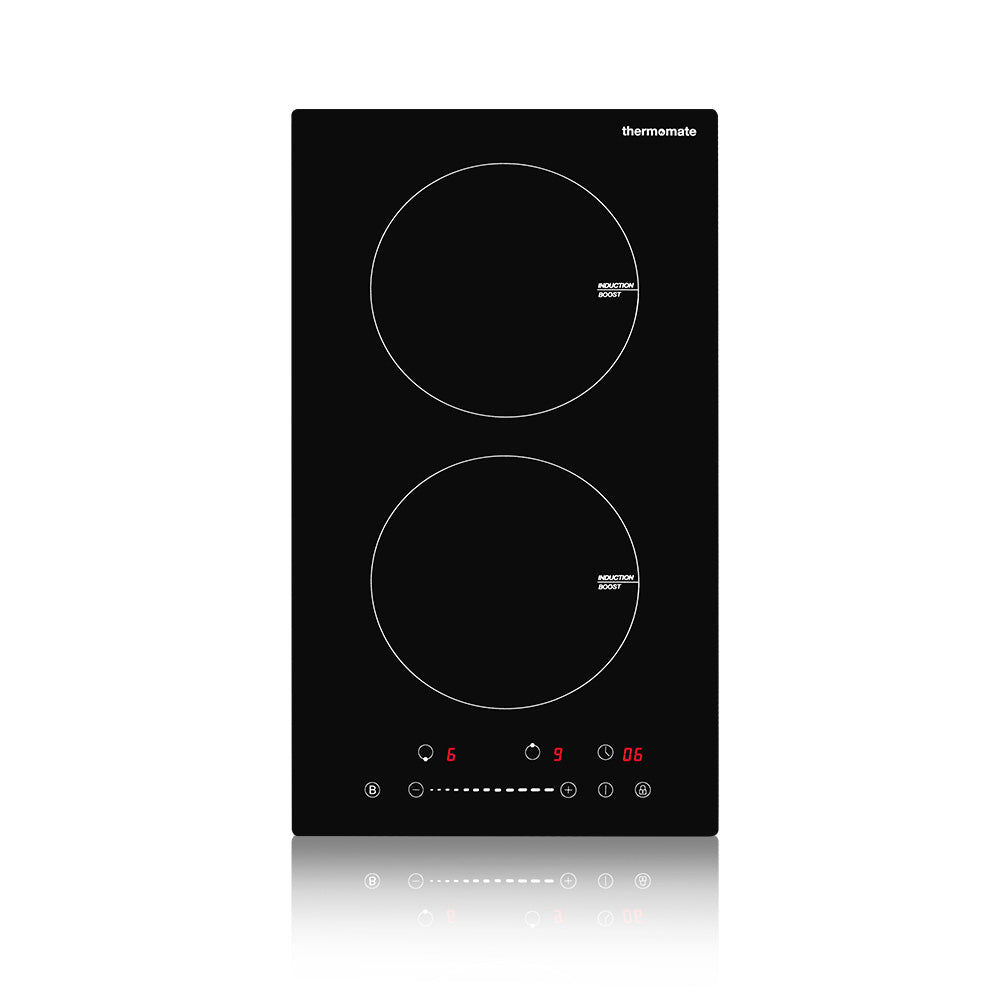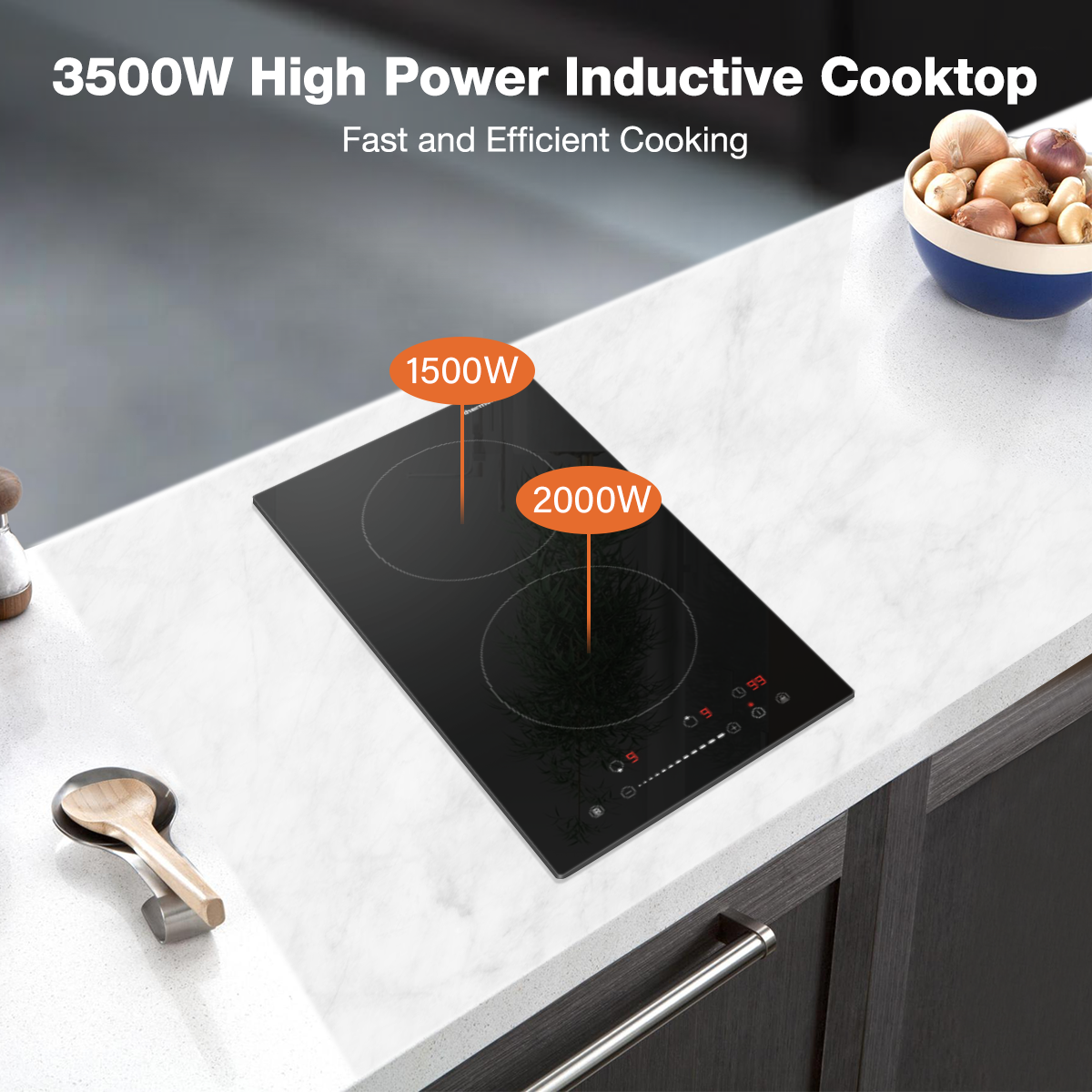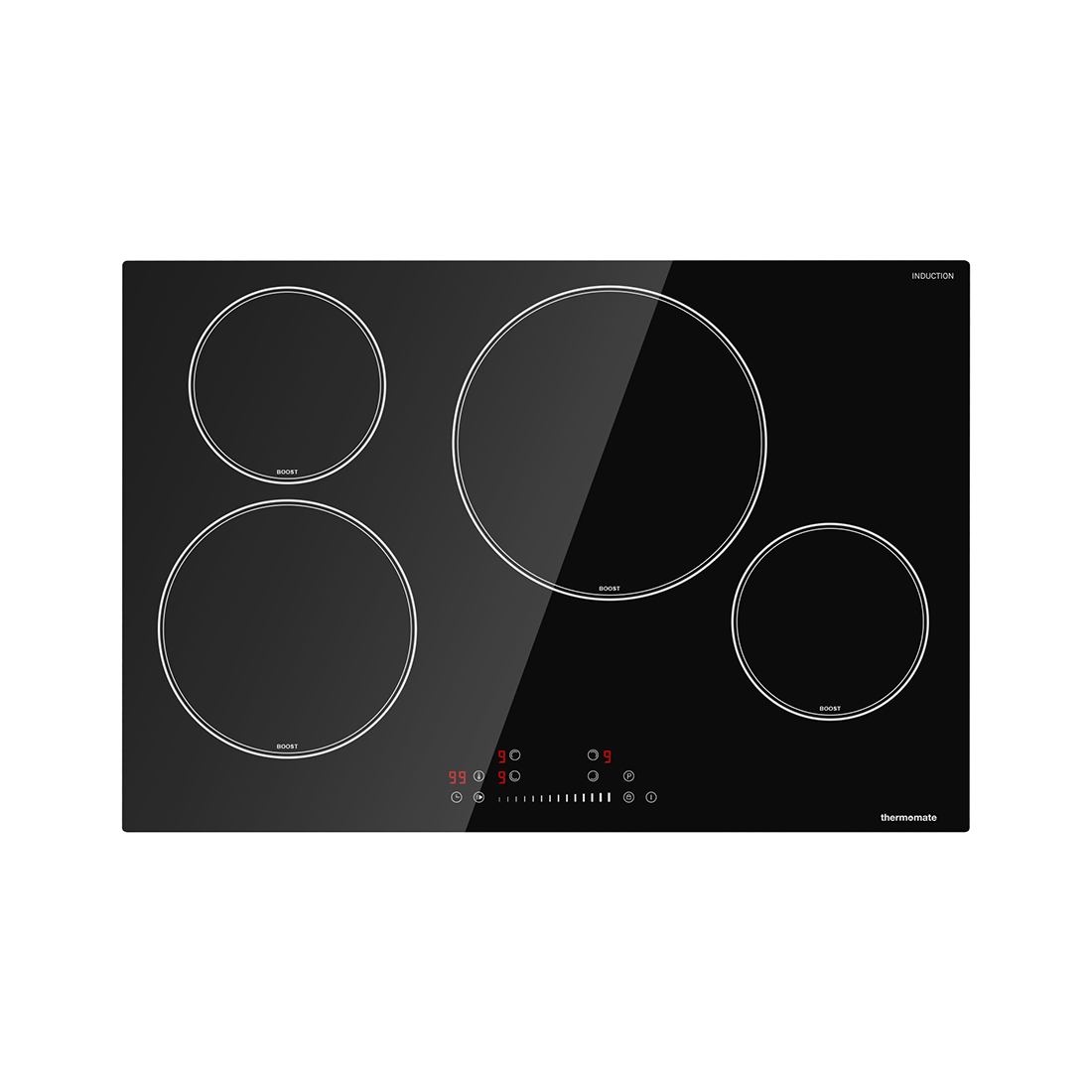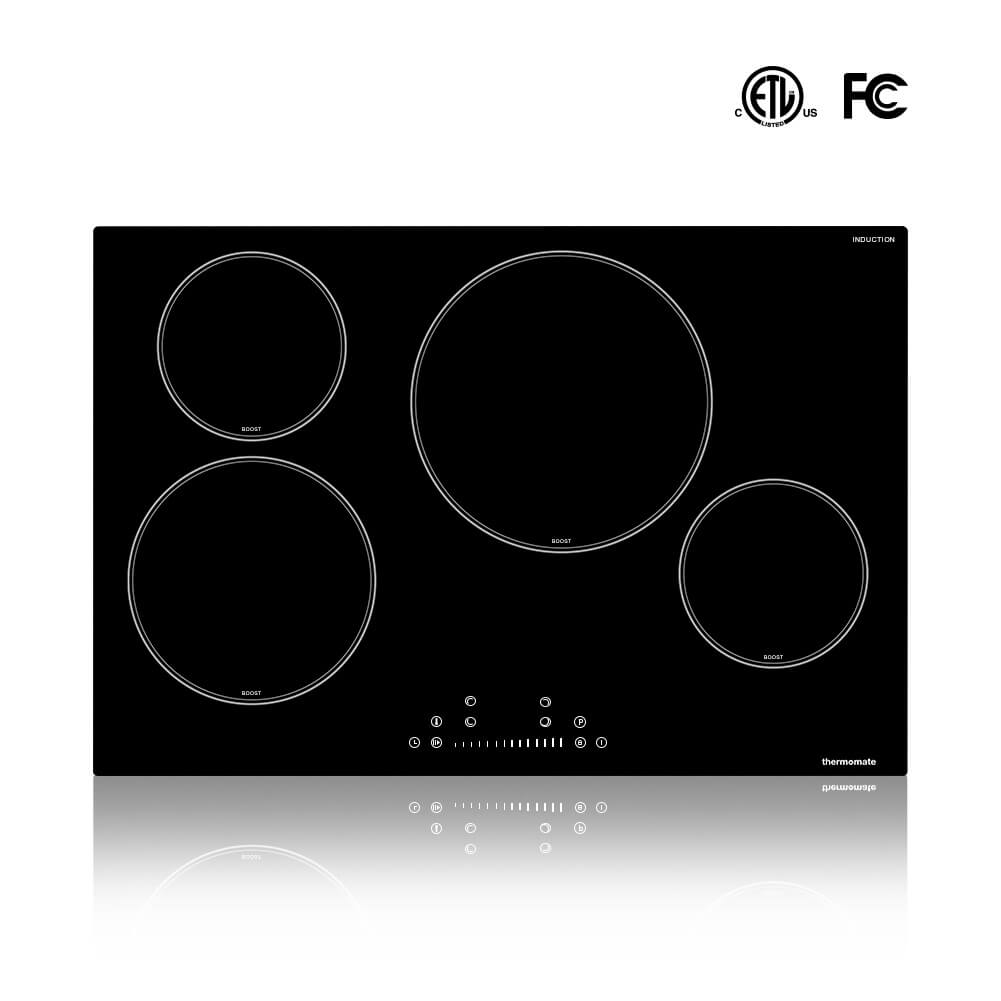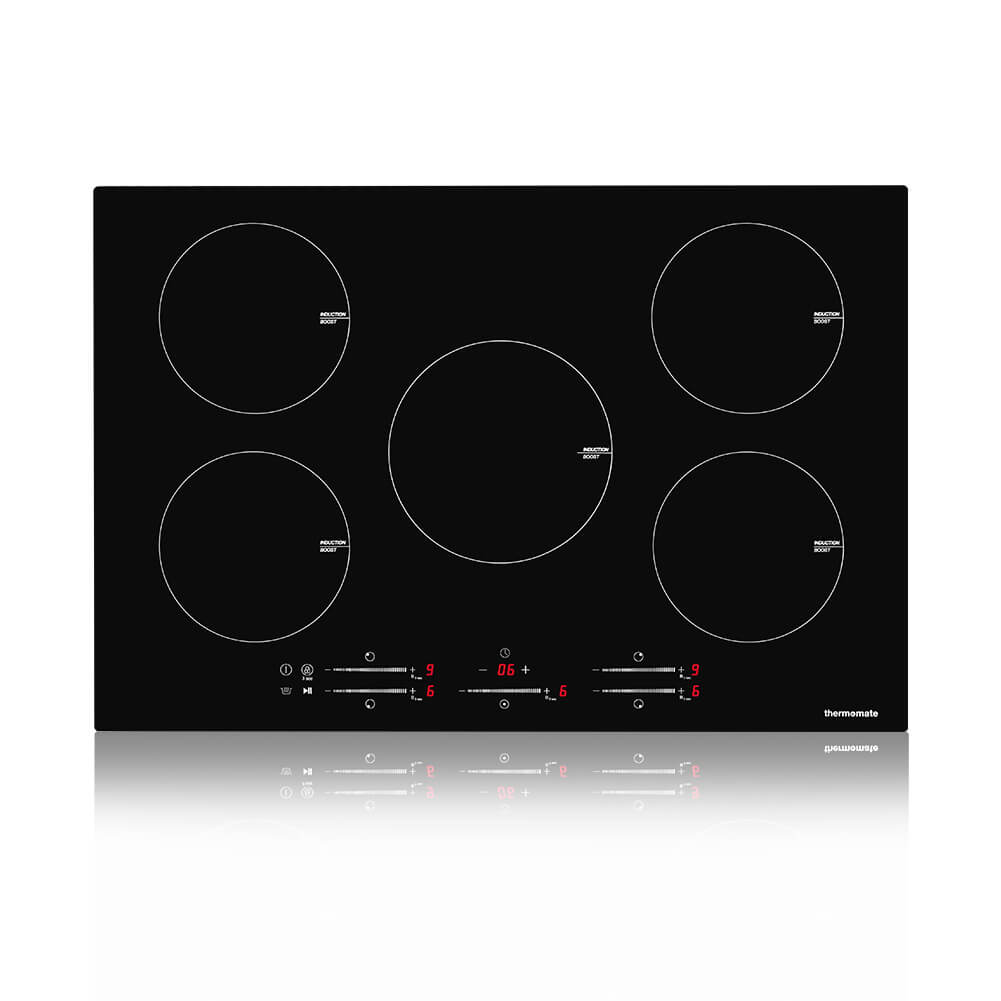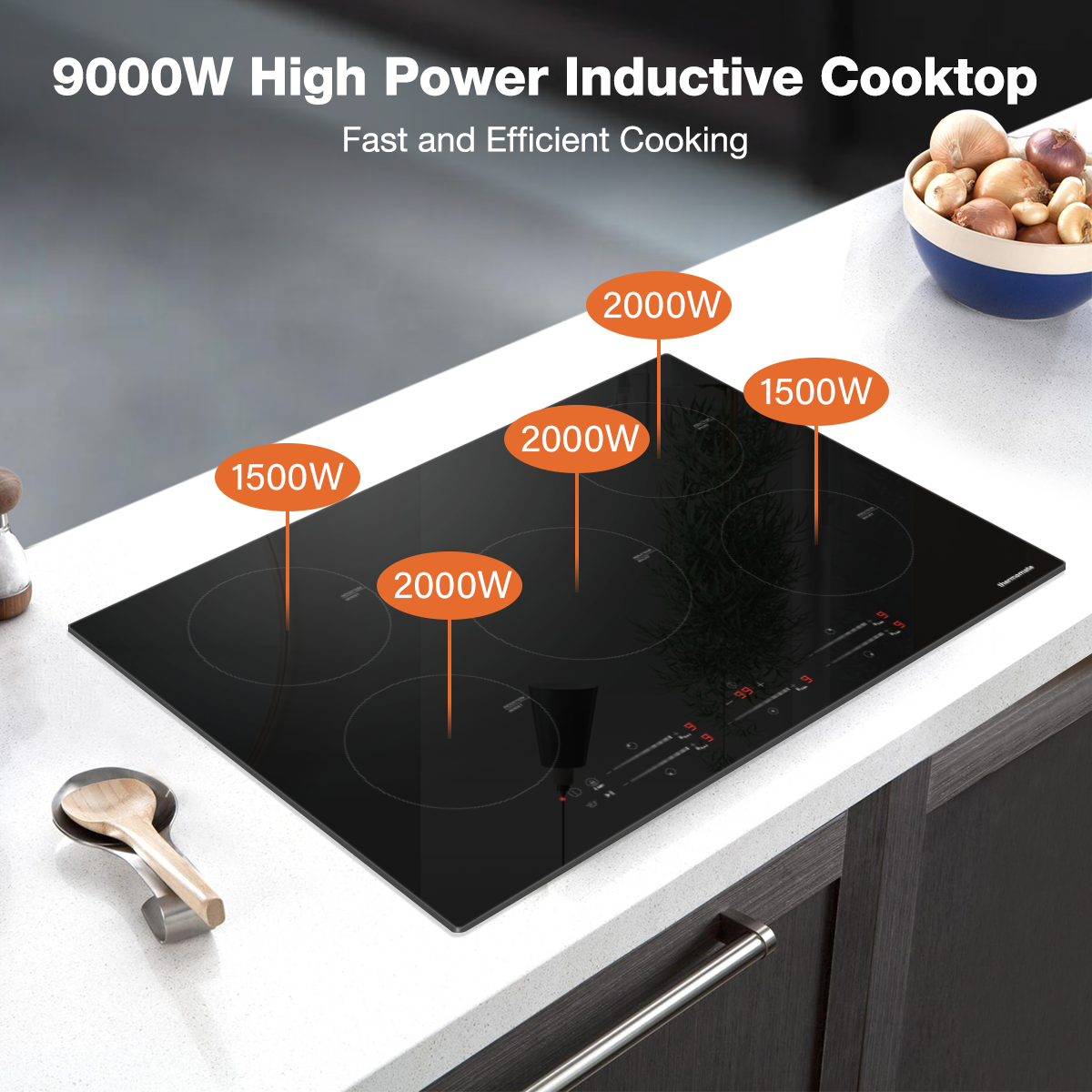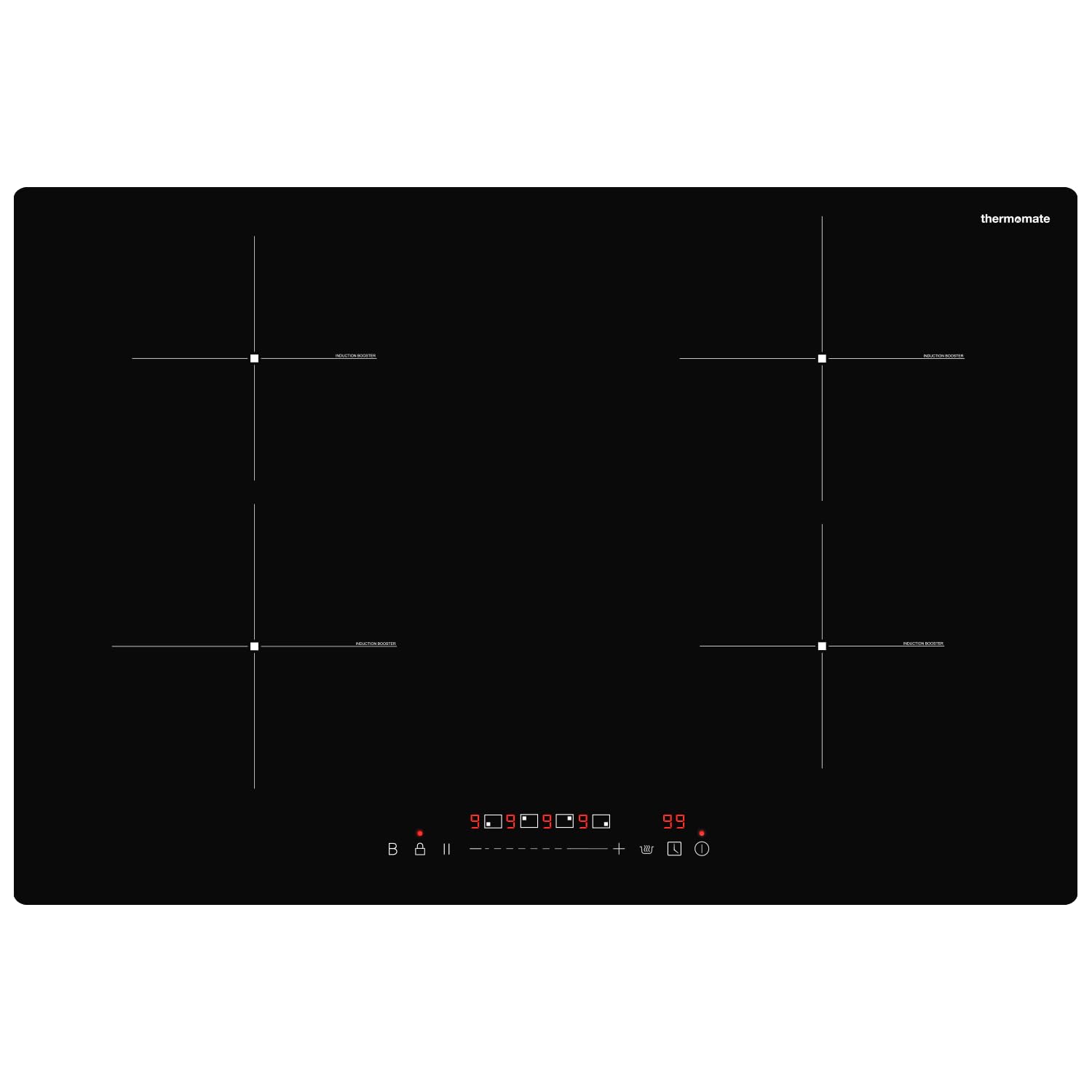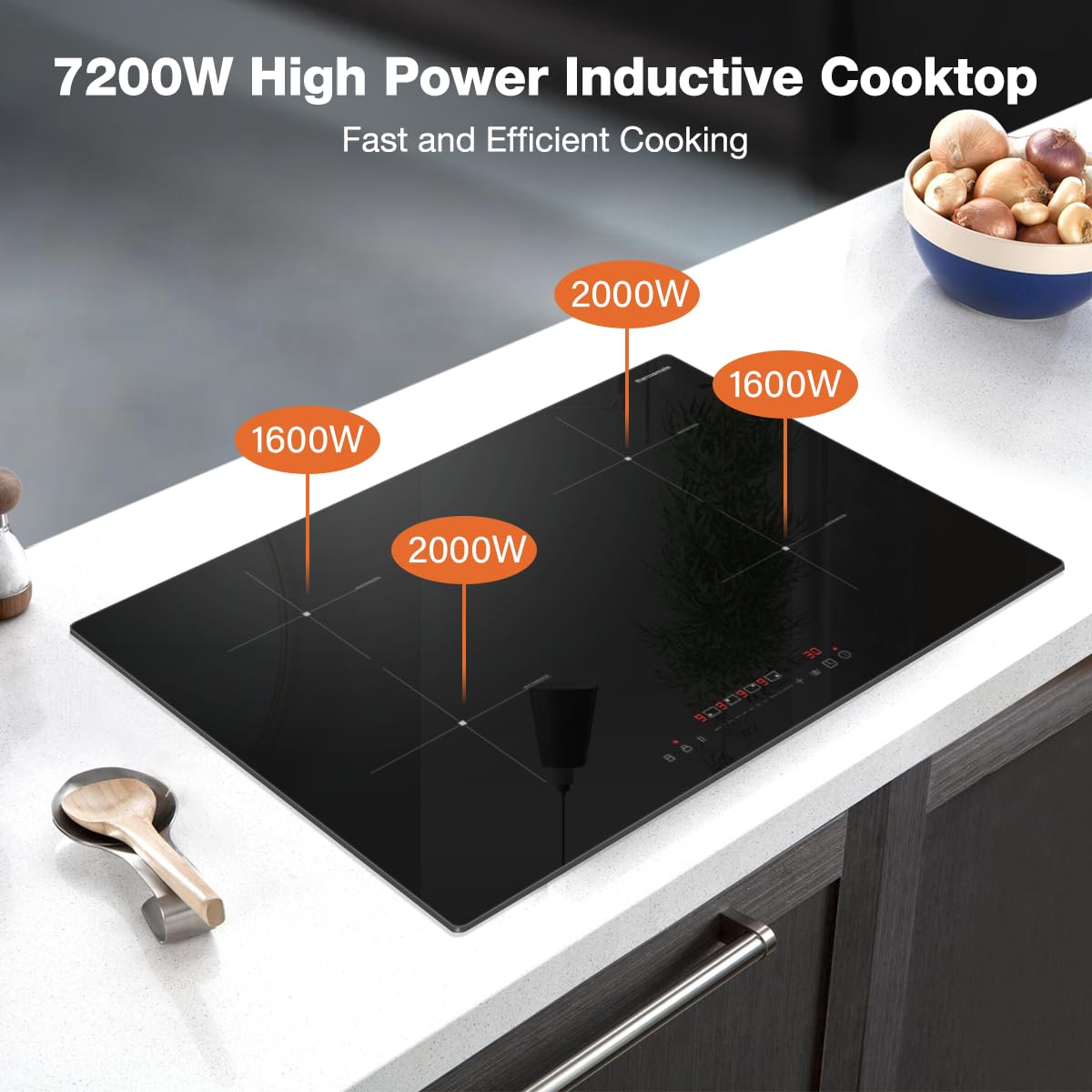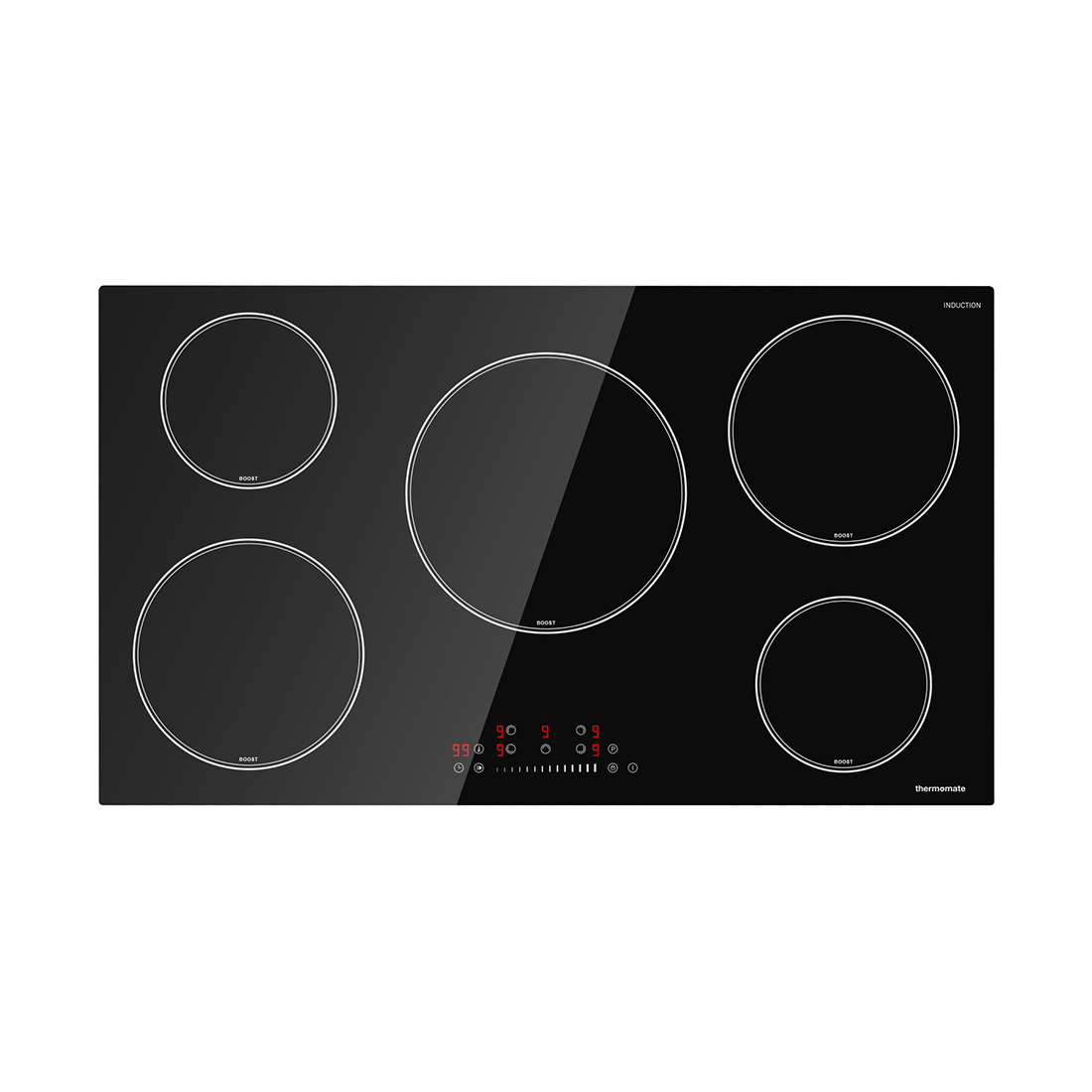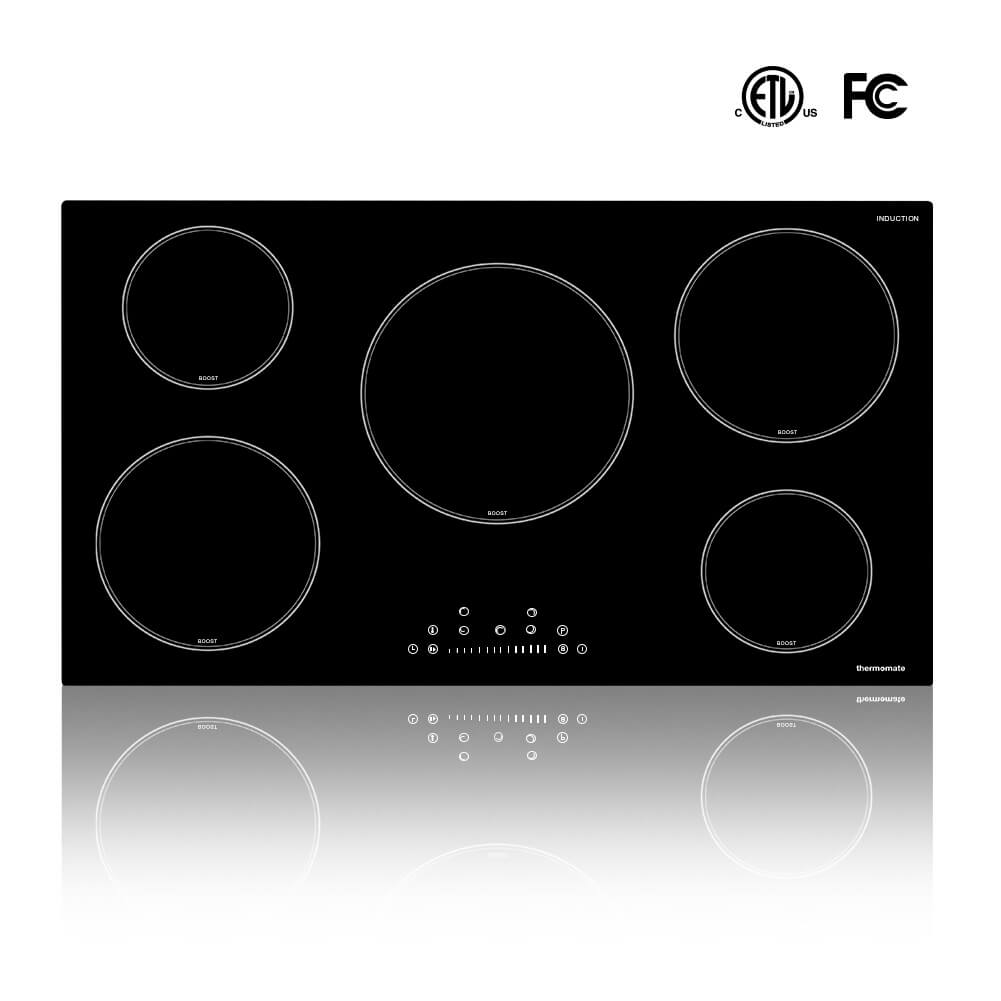Ceramic and Induction cooktops are the new era technologies that are easy to use and important assets in the modern kitchen.When the time comes to upgrade or replace the home kitchen appliances, one must know the difference between the two best-selling cooktops.
In this article, I would be looking into the differences between Ceramic and Induction cooktops and which one is better for you.
SHOP CERAMIC COOKTOPS SHOP INDUCTION COOKTOPS
Table of Contents

Ceramic cooktops contain coiled metal elements beneath the glass ceramic layer. The surface on top is smooth. This coil is connected to an electric socket. When switched on, the electrical resistance heats the metal coil. This heat is transferred to the glass ceramic surface via convection and consequently, heat is transferred to cookware. The heat transferred cooks food. The electrical element turns hot red as soon as they are heated. It is, therefore, also called a radiant cooktop.
In Induction cooktops, heat is generated inside the cookware via electromagnetic induction. It works on the principle of generating heat energy via magnetism. When induction is switched on, an alternating current flows through the coil, creating a magnetic field. The cookware is made up of a material that is magnetically conductive and ferromagnetic. This results in a resistive electric current flowing in the cookware. This resistive electric current generates heat and cooks food.

- Induction and ceramic cooktops tend to feature digital, touch controls. As well as adding to the design value of the cooktop, this also helps you to be more precise when setting heat levels.
- Other valuable features of touch controls such as child or control panel locks, timers, pause buttons, and so on can be very useful for the busy householder.
- An induction cooktop can respond to changes in heat settings in an instant. Ceramic cooktops need time to heat up and heat down.
- Residual heat remains on the ceramic cooktop long after cooking. It takes time to cool off. There are hot indicators to show when a cooktop is hot to touch. The residual heat in the case of an Induction cooktop quickly dissipates.

Both ceramic and induction cooktops offer a wide range of effective safety features that significantly reduce the risk of injury and damage to the cooktop.
- The induction cooktop is ideal for any home with small children as the surface doesn’t get as hot as a ceramic top and only activates even when switched on until a pan is placed on the zone. Besides, due to its cooking technology, its surface doesn’t get as hot as a ceramic cooktop.
- Ceramic cooktop retains up to four or five times more heat after cooking. Many models now come with a residual heat indicator so you will always know which zones are still too hot to touch or clean after cooking.

- Ceramic cooktops are cheaper than Induction and are a great option for strict budgets.
- Although induction cooktops are costlier, they pay back by saving energy and time when compared to ceramic cooktops.
- The cost of an induction cooktop is also a bit higher due to the fact that you can only use induction-friendly cookware with it. Not every cookware works on an induction cooktop.

- Ceramic inductions work with any kind of cookware. The important thing to remember is that the base should be flat and smooth touching the ceramic cooktop. Only then will maximum heat get absorbed after coming in contact with the ceramic cooktop.
- Induction cooktops work with materials made up of ferrous materials like cast iron or stainless steel. If we place a magnet on the base of the cooking utensil, we can come to know if it is induction compatible. If the magnet sticks to the bottom of the cookware, they are induction compatible. We can also purchase converters which are iron plates that fit between the base of the cookware and the cooktop. This can make any utensil compatible with the induction cooktop.

Most induction and ceramic cooktops feature digital touch controls meaning they are totally flat and crevices didn't for food fall into. This in turn means that cleaning the cooktop is usually just a case of wiping it down.
- As the cooktop remains hot for a longer duration, spilled food can bake or burn on the surface.
- It is important to clean after the cooktop has cooled down with the help of special cleaning products.
- You can also use a specialized scraper at a 45-degree angle.Due to heat element radiating heat, ceramic can crack if cold water touches it when the cooktop is hot.
- Induction is easier to clean due to lack of heat.


